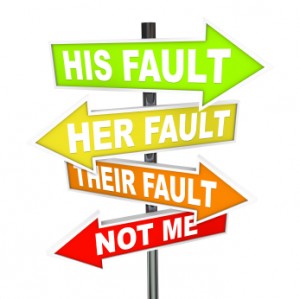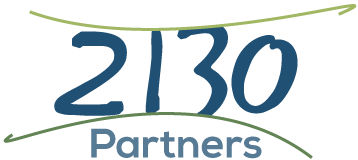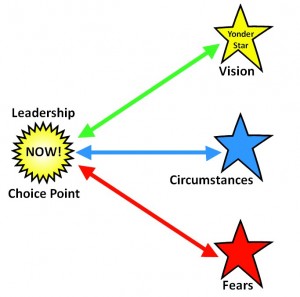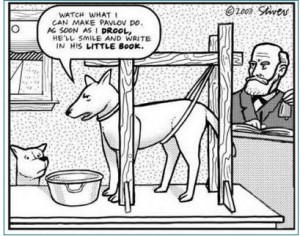Underneath it all, particularly within owner-entrepreneur types of environments, there is a very particular bottom line and let’s cut right to it. Owner/entrepreneurs work the way they work because they like it. It’s working for them. What “the pain” is almost always about is that the way they are working, is not creating the results they want and they don’t like it. However, the request is “go fix the other people!” Ultimately, so the owner/entrepreneur can continue with their patterns and approach without having to shift themselves. Sometimes, depending on how urgent the “pain” is, leaders will shift, but inevitably, the minute there is enough breathing room, they snap back to their previous ways. Just as inevitably, the patterns that don’t work for the business, (but work on a personal level for the leader), are back, and soon enough, the “pain” is back.
The most important challenge for leaders when there is business “pain” is to look in the mirror and ask tough questions. Sure, there may be some work that needs to be done with other people, or teams, but leaders set the mood, tone and culture to an enormous extent. So if you are a leader experiencing “business pain,” start with yourself and some fundamental questions:
- Who am I BEING as a leader? Meaning, what are my attitudes, beliefs and patterns of reaction? Am I willing to dig deep and understand my role in what is happening?
- Am I willing to change?
- Am I willing to create a vision for myself about the type of leader I am committed to being and am I willing to create a set of practices to support the fulfillment of that vision?
- Am I willing to find the support I need to make shifts?
 Change is possible and change takes work.Whether a leader changes or not, energy is being expended. It takes energy to keep patterns in place when they aren’t working and there is a state of resistance. We call that ‘friction and waste,’ a subject we address in our blog posts on Lean Thinking. It takes energy to make changes. There is a cost either way. The question is – where does a leader “pay up?”
Change is possible and change takes work.Whether a leader changes or not, energy is being expended. It takes energy to keep patterns in place when they aren’t working and there is a state of resistance. We call that ‘friction and waste,’ a subject we address in our blog posts on Lean Thinking. It takes energy to make changes. There is a cost either way. The question is – where does a leader “pay up?”
If any of this sounds familiar, consider taking yourself on, not just your teams, processes or organizational structure.
We have a proprietary approach and method we offer for this, and there are many others out there as well. The key is to find the one that resonates for you and get to it!


 There are many dimensions of health including: mental, emotional, spiritual, physical, environmental and more. It’s pretty self-evident that the healthier you are, the better you can perform. Performance is foundational to leadership yet health is rarely part of the leadership conversation. If anything, as researcher Brene Brown says, being run down from exhaustion has become a "status symbol." Although people may admire your tenacity and commitment, being exhausted is not a healthy state and it's unlikely you are performing optimally.
There are many dimensions of health including: mental, emotional, spiritual, physical, environmental and more. It’s pretty self-evident that the healthier you are, the better you can perform. Performance is foundational to leadership yet health is rarely part of the leadership conversation. If anything, as researcher Brene Brown says, being run down from exhaustion has become a "status symbol." Although people may admire your tenacity and commitment, being exhausted is not a healthy state and it's unlikely you are performing optimally. er day, (8 ounce glasses that is). Yet how many of us do it? If you can just do this piece, your health will be improved simply because you will be hydrated. Don’t like plain water? Squeeze half a lemon or lime in it. Still not good? A splash of cranberry or pomegranate juice has health benefits and helps with the taste, (provided you are doing just a splash and you are doing real juice, not the high sugar filled kind.) The basics are covered in the works of Dr. Weil and Dr. Oz we mentioned above and being hydrated is one example of improving your health without feeling like you are taking hours out of your day for a huge program.
er day, (8 ounce glasses that is). Yet how many of us do it? If you can just do this piece, your health will be improved simply because you will be hydrated. Don’t like plain water? Squeeze half a lemon or lime in it. Still not good? A splash of cranberry or pomegranate juice has health benefits and helps with the taste, (provided you are doing just a splash and you are doing real juice, not the high sugar filled kind.) The basics are covered in the works of Dr. Weil and Dr. Oz we mentioned above and being hydrated is one example of improving your health without feeling like you are taking hours out of your day for a huge program.
 To move into a New Year powerfully and to create the results you want there are some key steps to take. The first is creating an “elegant ending” to the past. Last week we posted about “
To move into a New Year powerfully and to create the results you want there are some key steps to take. The first is creating an “elegant ending” to the past. Last week we posted about “ How bold are you willing to be setting your goals? If you are completely certain you can make the goals are you stretching yourself enough? Focus on designing the most catalytic, highly leveraged action steps you can. By “catalytic” we mean that your actions produce the intended results without your being used up in the process. By “highly leveraged,” we mean you produce very big results with minimal resources.
How bold are you willing to be setting your goals? If you are completely certain you can make the goals are you stretching yourself enough? Focus on designing the most catalytic, highly leveraged action steps you can. By “catalytic” we mean that your actions produce the intended results without your being used up in the process. By “highly leveraged,” we mean you produce very big results with minimal resources. It’s the time of year when many of us conduct annual rituals that may include everything from strategic planning sessions for business to making New Year’s resolutions or setting Bold Goals for 2012 and beyond. We’ve found any such process to be much harder to do when we haven’t completed and let go of the past. It’s very difficult, (impossible?), to really move forward when we are carting the past along with us. The process of letting go can include changing your attitude and perceptions about what the economy did to you, to digging very deep and letting go of some of the childhood stuff that shapes your life.
On the fun end of the spectrum, we have for many years put flip chart paper all over our walls when we have a New Year’s Eve party with a simple question on each, such as “What did I start and not complete?” or “What did I accomplish that I haven’t been acknowledged for?” or “What did I screw up that I didn’t get caught for?” Guests write on the charts all evening with colored markers and sometimes get even more creative with a touch of artistic display as well. On a number of occasions we have taken them all down at midnight and symbolically burned them.
It’s the time of year when many of us conduct annual rituals that may include everything from strategic planning sessions for business to making New Year’s resolutions or setting Bold Goals for 2012 and beyond. We’ve found any such process to be much harder to do when we haven’t completed and let go of the past. It’s very difficult, (impossible?), to really move forward when we are carting the past along with us. The process of letting go can include changing your attitude and perceptions about what the economy did to you, to digging very deep and letting go of some of the childhood stuff that shapes your life.
On the fun end of the spectrum, we have for many years put flip chart paper all over our walls when we have a New Year’s Eve party with a simple question on each, such as “What did I start and not complete?” or “What did I accomplish that I haven’t been acknowledged for?” or “What did I screw up that I didn’t get caught for?” Guests write on the charts all evening with colored markers and sometimes get even more creative with a touch of artistic display as well. On a number of occasions we have taken them all down at midnight and symbolically burned them. The term “comfort zone” has become a popular way to describe how we are feeling about various activities we are taking part in – “that pushed me way out of my comfort zone,” or “that was not in my comfort zone,” are pretty common phrases these days.
When we talk about our “comfort zone” what we are talking about is our personal orbit, our range of personal activities. Each of us has a daily routine, a weekly routine and perhaps even a monthly or yearly routine. Generally speaking we are creatures of habit and we develop comfort zones we like, and of course, feel comfortable in.
The term “comfort zone” has become a popular way to describe how we are feeling about various activities we are taking part in – “that pushed me way out of my comfort zone,” or “that was not in my comfort zone,” are pretty common phrases these days.
When we talk about our “comfort zone” what we are talking about is our personal orbit, our range of personal activities. Each of us has a daily routine, a weekly routine and perhaps even a monthly or yearly routine. Generally speaking we are creatures of habit and we develop comfort zones we like, and of course, feel comfortable in. As we discuss comfort zones, set points, etc. we want to be clear that this is not a piece about people who plod along and move slowly or people who seem risk averse. If you are a fast-paced, “go go go” type of person that is your comfort zone. What if you had to slow down, be more reflective, bring your energy “down and in” instead of being an “up and out” kind of person? What if you had to take on a meditation practice? Would you still be in your comfort zone? What if you are a thrill seeker and look for ways to “push the envelope” all the time? What would happen if you lived a more mundane existence and had to experience the ordinary? Would you still be in your comfort zone?
As we discuss comfort zones, set points, etc. we want to be clear that this is not a piece about people who plod along and move slowly or people who seem risk averse. If you are a fast-paced, “go go go” type of person that is your comfort zone. What if you had to slow down, be more reflective, bring your energy “down and in” instead of being an “up and out” kind of person? What if you had to take on a meditation practice? Would you still be in your comfort zone? What if you are a thrill seeker and look for ways to “push the envelope” all the time? What would happen if you lived a more mundane existence and had to experience the ordinary? Would you still be in your comfort zone? Have you ever wondered whether there is any common language that exists for all humans and, if so, how knowing about that language might help you be a more effective as a leader? Well, there is and researchers have called it “deep metaphors.”
In the November/December 2008 issue of
Have you ever wondered whether there is any common language that exists for all humans and, if so, how knowing about that language might help you be a more effective as a leader? Well, there is and researchers have called it “deep metaphors.”
In the November/December 2008 issue of  Awhile ago I was forwarded an email written by Shama Kabani. [She runs an
Awhile ago I was forwarded an email written by Shama Kabani. [She runs an  ing CEO membership organization and I have worked with them for more than 16 years. I can say the 5 insights offered by Kinsey below are very consistent with my experience of the CEO population. Here they are with notes from me included.
ing CEO membership organization and I have worked with them for more than 16 years. I can say the 5 insights offered by Kinsey below are very consistent with my experience of the CEO population. Here they are with notes from me included. Being powerful in translating intentions into reality and sustaining them requires presence and adaptability in the face of life’s circumstances – circumstances that can change every moment. Where can we turn for tools to support ourselves?
The United States military has long taught our special ops teams and fighter pilots a thought process called the OODA Loop. These teams function in relatively small units who have large assignments with very limited time and resources. They train incessantly and plan their missions in incredible detail. Yet, no plan survives its collision with reality and conditions in the field often differ from those on the planning table.
Being powerful in translating intentions into reality and sustaining them requires presence and adaptability in the face of life’s circumstances – circumstances that can change every moment. Where can we turn for tools to support ourselves?
The United States military has long taught our special ops teams and fighter pilots a thought process called the OODA Loop. These teams function in relatively small units who have large assignments with very limited time and resources. They train incessantly and plan their missions in incredible detail. Yet, no plan survives its collision with reality and conditions in the field often differ from those on the planning table.
 In a Wall Street Journal article, “
In a Wall Street Journal article, “ Fast forward back to today with this historical perspective and we can see that everything we take for granted as we do business today was originally invented by someone to facilitate trade, which in turn was driven by thousands of entrepreneurs in all regions where they were allowed to operate and were not taxed out of existence. Modern management is just a relatively late development to solve the “recent” problems of large operations scattered over great geographic areas and allow them to continue to facilitate trade and lower its cost. Much of the value of that management has been in gathering, organizing, and dispensing information needed by large numbers of people in far-flung operations to get their work done and make the transactions happen.
Fast forward back to today with this historical perspective and we can see that everything we take for granted as we do business today was originally invented by someone to facilitate trade, which in turn was driven by thousands of entrepreneurs in all regions where they were allowed to operate and were not taxed out of existence. Modern management is just a relatively late development to solve the “recent” problems of large operations scattered over great geographic areas and allow them to continue to facilitate trade and lower its cost. Much of the value of that management has been in gathering, organizing, and dispensing information needed by large numbers of people in far-flung operations to get their work done and make the transactions happen. First, let's look at what we can learn from Lady Gaga. Given her phenomenal success there are many ways we could analyze her. She and her team have been masters of social media and reinventing how pop music is marketed. She is arguably the number one pop star in the world. Rather than evaluate her business approach we want to focus on how she has truly tapped into a community - her fans that she lovingly refers to as “my little monsters.” She has cast herself as someone who was lonely and felt isolated growing up, but as it turns out, she was just a misunderstood brilliant artist and her fans are too. So “monster” references their “outsider status.” She connects with her fans as also being wonderful outsiders and calls herself “mama monster.” Here is just a sample of the lyrics from her latest hit, “
First, let's look at what we can learn from Lady Gaga. Given her phenomenal success there are many ways we could analyze her. She and her team have been masters of social media and reinventing how pop music is marketed. She is arguably the number one pop star in the world. Rather than evaluate her business approach we want to focus on how she has truly tapped into a community - her fans that she lovingly refers to as “my little monsters.” She has cast herself as someone who was lonely and felt isolated growing up, but as it turns out, she was just a misunderstood brilliant artist and her fans are too. So “monster” references their “outsider status.” She connects with her fans as also being wonderful outsiders and calls herself “mama monster.” Here is just a sample of the lyrics from her latest hit, “ Back in the 1950’s, homogeneity was celebrated - “The Man In The Grey Flannel Suit.” The IBM salesman with the dark suit and black horn rimmed glasses, whether he needed them or not - the more similar and “cookie cutter” the better. If you are from the generation that grew up with “Leave it to Beaver,” you may still have fond memories of that reality. The thing is, the pendulum is swinging and it hasn’t maxed out yet. The younger generations are celebrating diversity, self-expression, and being an individual.
Back in the 1950’s, homogeneity was celebrated - “The Man In The Grey Flannel Suit.” The IBM salesman with the dark suit and black horn rimmed glasses, whether he needed them or not - the more similar and “cookie cutter” the better. If you are from the generation that grew up with “Leave it to Beaver,” you may still have fond memories of that reality. The thing is, the pendulum is swinging and it hasn’t maxed out yet. The younger generations are celebrating diversity, self-expression, and being an individual. Ok I’m really on a roll with the
Ok I’m really on a roll with the  I’m really enjoying the
I’m really enjoying the  (This post is an edited version of a new article by Suzanne Mayo Frindt. To get the complete text
(This post is an edited version of a new article by Suzanne Mayo Frindt. To get the complete text  How Can We Develop a Learning Culture?
There are many books and articles about learning organizations including work by Senge
How Can We Develop a Learning Culture?
There are many books and articles about learning organizations including work by Senge A Google search for time management blogs produces more than 20,000,000 results. Charles Kettering’s well known phrase “a problem well stated is a problem half solved” gives us a clue as to why so many people are writing and speaking about time management and yet we see a huge percentage of our clients suffering trying to manage their time. We believe the problem neeeds to be "well stated" or reframed. The “Frindt Correlate” to Mr. Kettering’s thoughtful phrase is “a problem misnamed is a problem stuck!”
If you think about it for more than a second or two, it’s clear that you can’t manage time! Time passes tick-tock. In our normal world, (excluding quantum physics from this discussion), it does not go faster or slower and no one has more or less of it than you do. If you want to push that examination to another level, notice that it is always and only ever now. Even when you get to that concept you call the future it will still be now.
A Google search for time management blogs produces more than 20,000,000 results. Charles Kettering’s well known phrase “a problem well stated is a problem half solved” gives us a clue as to why so many people are writing and speaking about time management and yet we see a huge percentage of our clients suffering trying to manage their time. We believe the problem neeeds to be "well stated" or reframed. The “Frindt Correlate” to Mr. Kettering’s thoughtful phrase is “a problem misnamed is a problem stuck!”
If you think about it for more than a second or two, it’s clear that you can’t manage time! Time passes tick-tock. In our normal world, (excluding quantum physics from this discussion), it does not go faster or slower and no one has more or less of it than you do. If you want to push that examination to another level, notice that it is always and only ever now. Even when you get to that concept you call the future it will still be now.
 In the 1920s Ivan Pavlov conducted a series of very famous experiments in which he taught dogs to salivate at the ringing of a bell. If PDAs had been invented, he could have taught the dog to salivate when his cell phone received a call, email or text. He might have even taught the dog to bark so he would never miss an “incoming!”
Much of what we observe in the behavior of those around us looks very similar. Despite frequent complaints about the number of emails and the expectations of immediate responses, PDAs are everywhere and constantly being checked. In our executive groups, members used to talk with each other at breaks. Now they all tend to get on their PDAs, and a good number are peeking throughout the meeting as well. Are you a victim of your PDA? What in the world is it all about?
In the 1920s Ivan Pavlov conducted a series of very famous experiments in which he taught dogs to salivate at the ringing of a bell. If PDAs had been invented, he could have taught the dog to salivate when his cell phone received a call, email or text. He might have even taught the dog to bark so he would never miss an “incoming!”
Much of what we observe in the behavior of those around us looks very similar. Despite frequent complaints about the number of emails and the expectations of immediate responses, PDAs are everywhere and constantly being checked. In our executive groups, members used to talk with each other at breaks. Now they all tend to get on their PDAs, and a good number are peeking throughout the meeting as well. Are you a victim of your PDA? What in the world is it all about? In a recent conference call with a group of our affiliated facilitators, I was struck by the high level of interest in becoming experts in conflict resolution. From divorce counseling to working on international negotiations, their attention was focused on what I call the “seen” portion of communication and relationship. It’s the part where fight, flight, freeze or appease behaviors are very observable and running the show. It’s also the part where people are very appreciative when someone helps pull the thorn out of their proverbial paw. The obviously large market of people, groups and nations in conflict is clearly calling to them.
Those in pain seem to be much more more willing to pay to reduce or eliminate the pain versus figuring out how to avoid it in the first place. In the physical world, that translates into Western medicine being largely focused on managing disease and illness instead of prevention. In the “unseen” world of our psyche, it translates into therapists, lawyers, and judges dominating the world of struggling marriages and breakdowns in business relationships.
In a recent conference call with a group of our affiliated facilitators, I was struck by the high level of interest in becoming experts in conflict resolution. From divorce counseling to working on international negotiations, their attention was focused on what I call the “seen” portion of communication and relationship. It’s the part where fight, flight, freeze or appease behaviors are very observable and running the show. It’s also the part where people are very appreciative when someone helps pull the thorn out of their proverbial paw. The obviously large market of people, groups and nations in conflict is clearly calling to them.
Those in pain seem to be much more more willing to pay to reduce or eliminate the pain versus figuring out how to avoid it in the first place. In the physical world, that translates into Western medicine being largely focused on managing disease and illness instead of prevention. In the “unseen” world of our psyche, it translates into therapists, lawyers, and judges dominating the world of struggling marriages and breakdowns in business relationships. We call this type of work “triage” which Merriam-Webster defines as 1) “a sorting of and allocation of treatment to patients and especially battle and disaster victims...” and 2) the assigning of priority order to funds on the basis of where funds an other resources can best be used, are most needed, or are most likely to achieve success.” When I recall my mom saying, “An ounce of prevention is worth a pound of cure,” the whole cultural spending priority seems backwards to me.
We call this type of work “triage” which Merriam-Webster defines as 1) “a sorting of and allocation of treatment to patients and especially battle and disaster victims...” and 2) the assigning of priority order to funds on the basis of where funds an other resources can best be used, are most needed, or are most likely to achieve success.” When I recall my mom saying, “An ounce of prevention is worth a pound of cure,” the whole cultural spending priority seems backwards to me. I have periodically noticed there seem to be a lot of issues around the word “no.” Not so much about saying it, but about not saying it. It is the absence of no, at times when it is the best answer, which seems to create all sorts of problems.
The dictionary says simply that ‘no’ means “a negative response; a denial or refusal.” In and of itself that meaning certainly doesn’t seem to be a big deal. So what’s the issue?
During an exploration of his “stressed out” state, one of our clients recently blurted out, “If I say no, the whole house of cards will come down! People will find out that I’m inadequate…I have to say yes to everything that comes at me to please everyone, even though the demands are killing me!” This client is not the exception and he is likely correct, this need to perpetuate a “superman” image is probably killing him and it could be killing you and/or your team members. As a leader it’s important to consider this. Do you have a culture that does not allow “no?” What are the consequences?
I have periodically noticed there seem to be a lot of issues around the word “no.” Not so much about saying it, but about not saying it. It is the absence of no, at times when it is the best answer, which seems to create all sorts of problems.
The dictionary says simply that ‘no’ means “a negative response; a denial or refusal.” In and of itself that meaning certainly doesn’t seem to be a big deal. So what’s the issue?
During an exploration of his “stressed out” state, one of our clients recently blurted out, “If I say no, the whole house of cards will come down! People will find out that I’m inadequate…I have to say yes to everything that comes at me to please everyone, even though the demands are killing me!” This client is not the exception and he is likely correct, this need to perpetuate a “superman” image is probably killing him and it could be killing you and/or your team members. As a leader it’s important to consider this. Do you have a culture that does not allow “no?” What are the consequences? So I cut a deal with Joanna in which I promised to take her calls, no matter what, and she never had to feel guilty about making another request, even if the last one was just yesterday. In return I would genuinely consider the request and unless I was really interested, most of the time I would simply say no. No stories, excuses, apologies, etc. Just no.
So I cut a deal with Joanna in which I promised to take her calls, no matter what, and she never had to feel guilty about making another request, even if the last one was just yesterday. In return I would genuinely consider the request and unless I was really interested, most of the time I would simply say no. No stories, excuses, apologies, etc. Just no. Witnessing the recent events in the Middle East has provoked feelings and reactions on many levels. Since this blog focuses on leadership, we want to point out a leadership lesson that we see. (Note: Because this is a leadership blog we are NOT making any comments about the political, economic or larger social implications of what is happening. We recognize that what is happening is complex. We are going to pull out and comment on a particular thread.)
When a situation is large scale and extreme, it creates a “stark relief map” where things become vividly visible. This is why looking at the leadership in the Middle East is relevant to leadership within organizations. Similar dynamics can and do happen within many organizations, just on a more subtle and less complex level.
Witnessing the recent events in the Middle East has provoked feelings and reactions on many levels. Since this blog focuses on leadership, we want to point out a leadership lesson that we see. (Note: Because this is a leadership blog we are NOT making any comments about the political, economic or larger social implications of what is happening. We recognize that what is happening is complex. We are going to pull out and comment on a particular thread.)
When a situation is large scale and extreme, it creates a “stark relief map” where things become vividly visible. This is why looking at the leadership in the Middle East is relevant to leadership within organizations. Similar dynamics can and do happen within many organizations, just on a more subtle and less complex level. Many business owners, entrepreneurs, and professionals are “visionaries” – independent minded self-starters with lots of creativity and ideas. They often have a deep belief and confidence in their own point-of-view. If you are one of these people and have been successful, these traits have served you well. The challenge is that, at some point, to increase your level of productivity and success, it will take a team around you.
Many business owners, entrepreneurs, and professionals are “visionaries” – independent minded self-starters with lots of creativity and ideas. They often have a deep belief and confidence in their own point-of-view. If you are one of these people and have been successful, these traits have served you well. The challenge is that, at some point, to increase your level of productivity and success, it will take a team around you.
 “What Are You Really Good At?”
“What Are You Really Good At?”